标签:des style class blog code http
set_input_delay/ set_output_delay
在与时钟选项定义的时钟相关的输入port上定义data arrival time,可将输入延时定义与上升沿或下降沿相关。
如果输入延时与简单的生成时钟相关,到生成时钟的clock arrival time要加到data arrival time上。
输入延时可以定义与时钟网络中的port相关,到参考port的clock arrival time要加到data arrival time上。
输入延时可以包含时钟源延时,默认条件下,相关的时钟源延时加到输入延时上;但是,当定义-source_latency_included选项时,时钟源延时不要相加,因为它并没有用作为input delay value的时序因素。
max用在时钟建立时间或恢复(recovery)校验上,min用于时钟保持时钟或移除(removal)校验上。

以上内容摘自Quartus help,基本定义edn上很多仁兄已经讲的很清楚了。
看下面简单的例子,两级触发器,来自
http://www.altera.com.cn/support/examples/timequest/exm-timequest.html

很简单的例子,仅仅加时钟周期约束的条件下,
用TimeQuest分析仅会得到一路path的分析,reg1 to reg2,时序图如下:

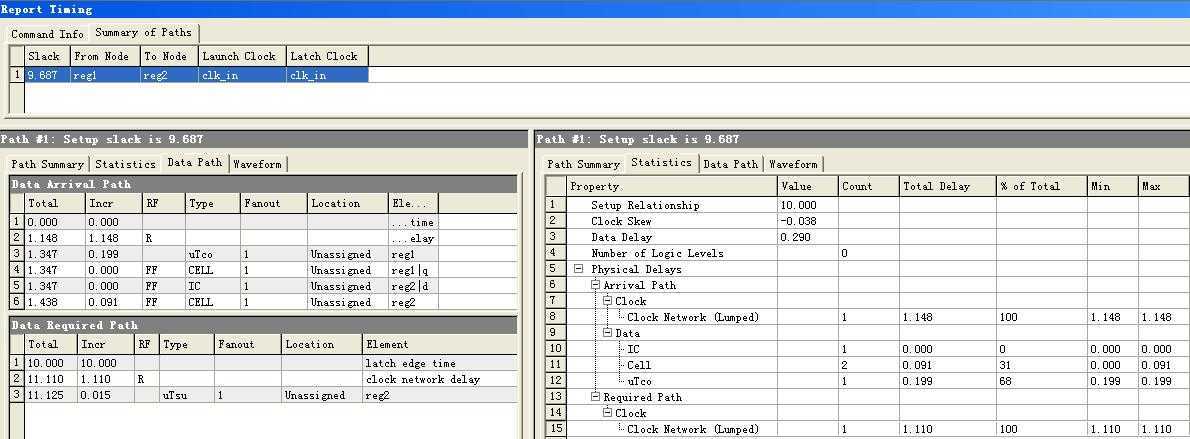
clock arrival time=latch edge+clock network delay to destination register
11.110=10+1.110
data required time =clock arrival time -u/tsu
11.125=11.110-(-0.015)
data arrival time=launch edge +clock network delay source register +u/tco+register-to-register delay
1.438=0+1.148+0.199+0.091
clock setup slack =data required time -data arrival time
9.687 = 11.125-1.438
重新运行TimeQuest,可以看到3个path分析
1) data_in to reg1
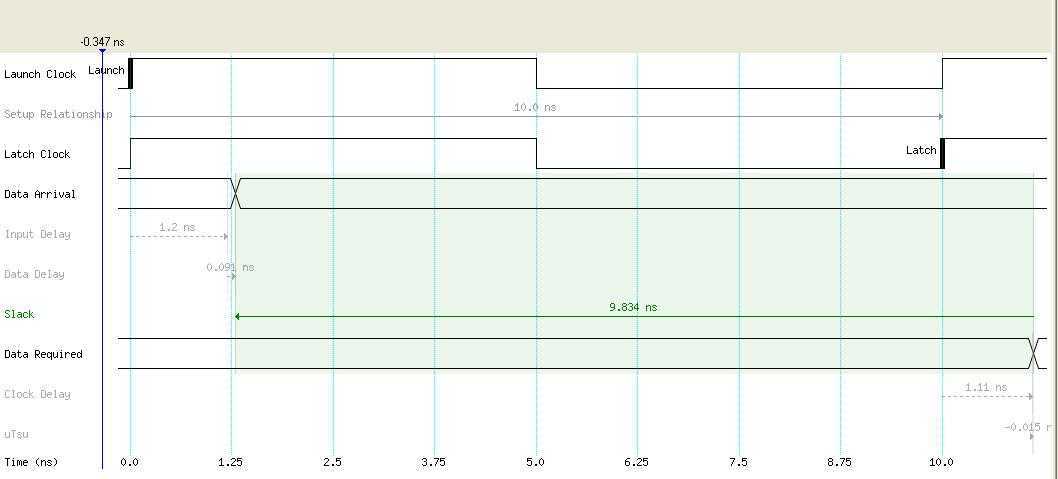
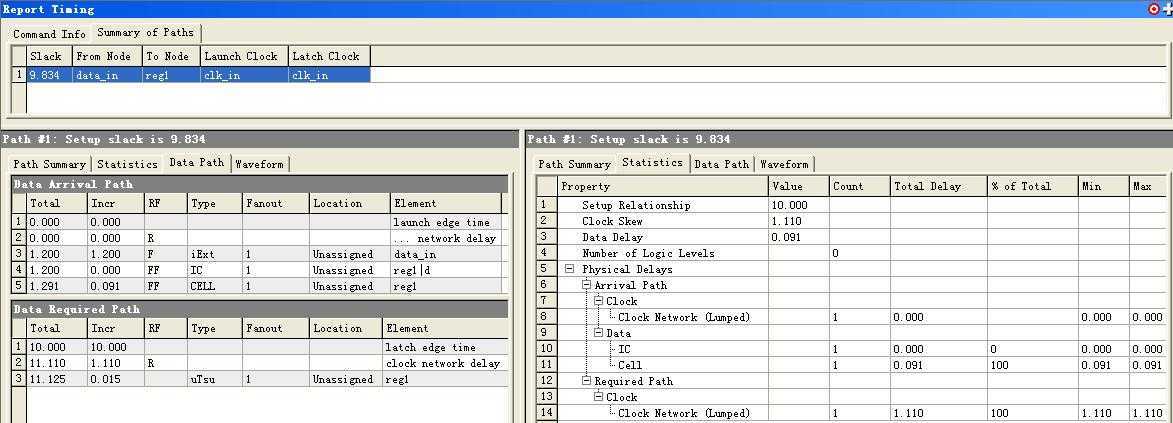
2) reg1 to reg2
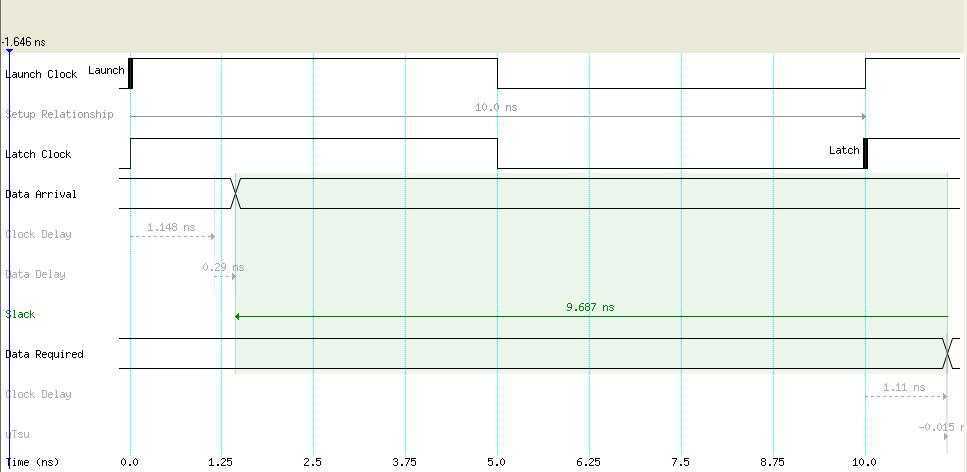
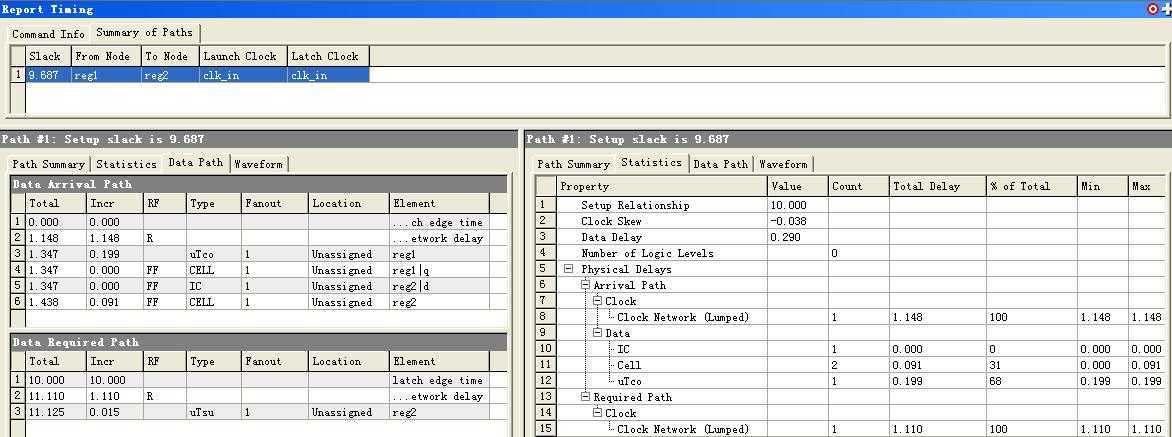
3) reg2 to data_out
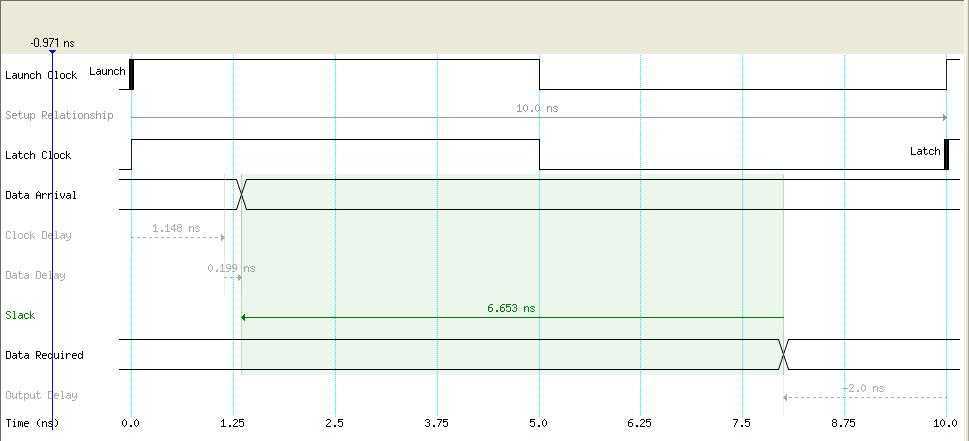
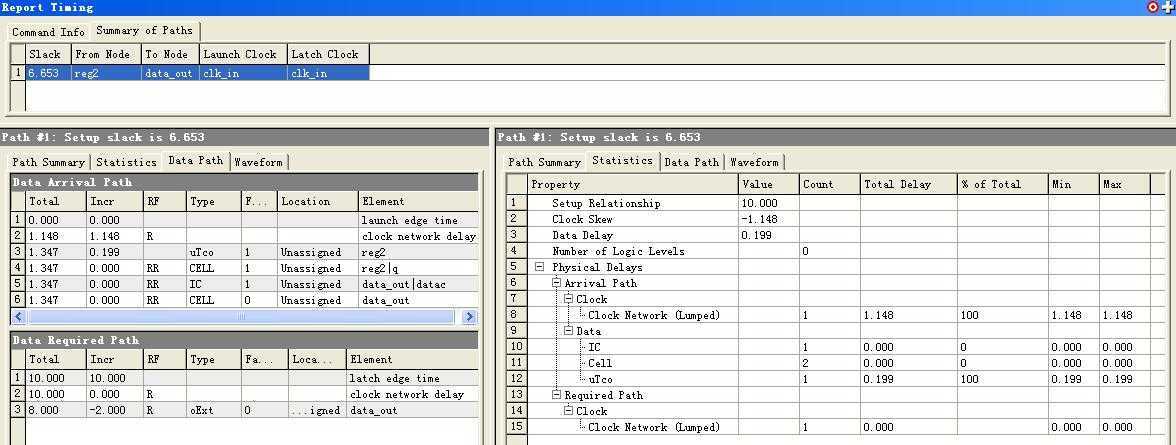
可以看到,输入路径在data arrival time上加上了input delay;输出路径在data required time上减去了output delay;分别表现为对setup和hold时间的影响。
timequest 中set input delay set output delay 的使用,布布扣,bubuko.com
timequest 中set input delay set output delay 的使用
标签:des style class blog code http
原文地址:http://www.cnblogs.com/lianjiehere/p/3785243.html